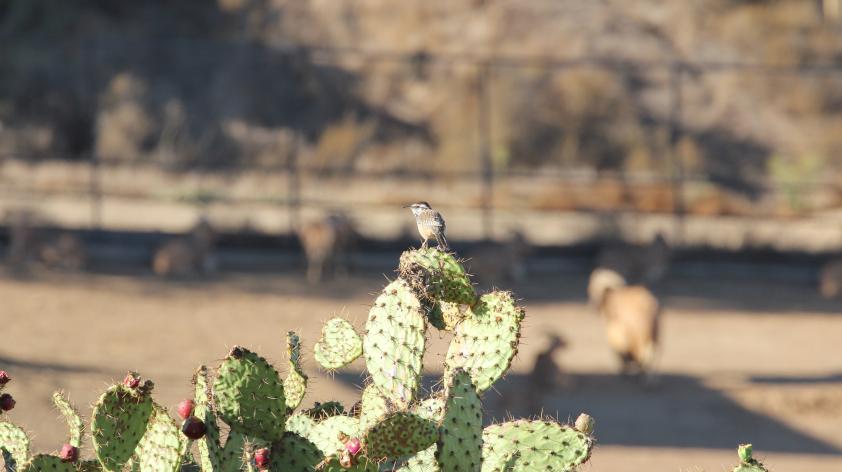
Build it and they will come
“Build it and they will come” has been the underlying philosophy for our restoration work to support the dwindling populations of coastal cactus wren, a species of special concern in Southern California.
Since the Witch Creek Fire swept through parts of San Diego County (including parts of the Biodiversity Reserve at the San Diego Zoo Safari Park) in October of 2007, ICR staff have been building new habitat by planting cactus to support the north county population. Over the past several years, some 6,000+ cactus have been planted by ICR at the Safari Park and nearby Lake Hodges. But to be honest, we couldn’t be sure that we were doing was going to work. We could just do our best to provide good habitat and hope the birds would find their way.
And… they have!
While out with one of our summer fellows documenting cactus for her project, we checked out an area of cactus planted in December of 2010 as part of an experiment (which meant they had tags dug in next to them and we knew for sure when they were planted!). After gingerly reaching between some cactus arms to read a tag, I was surprised to look up and find a nice little cactus wren nest just above me!
Coastal cactus wren nests are unusual, football shaped instead of the open-top nests people usually think of for birds. Covered with downy grey feathers, the entrance to the nest we found had clearly been in use this past breeding season. I quickly snapped a photo and texted it to my former coworkers who had organized the cactus planting in 2010 (and personally planted countless cactus pads). They were ecstatic to see their efforts pay off – even if I had absentmindedly texted to tell them before 7 in the morning!
Ecological restoration is not a field for the impatient. Some processes, like growing cactus, just happen slowly. This can make it extremely difficult to know if your conservation actions are actually helping.
For this project, we monitored cactus survival and growth for the first couple of years (when they’re the most vulnerable), but couldn’t really spend the time or staff time to track the cactus for the seven years it was estimated to take before the cactus reached the height suitable for wrens to build their nests. We were fortunate to have the summer fellow program help support a quick evaluation of some of our plantings this year.
In addition to retreading some of the areas with planted cactus, this past spring we also conducted some surveys for the birds to see if they’ve expanded their habitat. Results of that study are pending, but it is definitely encouraging to see a nest in an area that didn’t have one before.
The slow growth of cactus is a good reminder to take care of habitat when you can.
Restoration is hard and slow - and not always guaranteed to work. Our current projects at ICR to help coastal cactus wrens are focused on reducing weed cover to keep habitat already occupied by wrens from degrading. The 2007 fire helped proliferate a weed that grows very densely and reduces the bare ground between shrubs and cactus that wrens use for hunting insects. Such dense weeds are also often more susceptible to ignition and controlling them helps reduce fire risk.
We have built it and the wrens have come. But we still have work to do to ensure the coastal cactus wren has habitat for generations to come.













